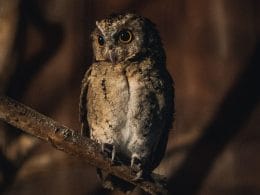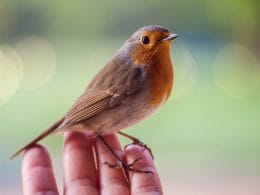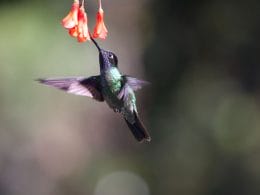Birds that fall under the order Passeriformes are considered songbirds, and are often referred to as “passerines.” About 4,000 species fall under this category, and most caged birds are actually considered songbirds. But what are the common songbirds of the Pacific Northwest?
These vocalist birds have highly developed vocal organs. They use their songs for a variety of different purposes. Males sing to mark their territories. They also sing to attract mates.
Songbirds add beauty and energy to our lives. Luckily, we have a fairly wide range of songbird species living in the Pacific Northwest.
In this post, we’ll be sharing some of the most common types of songbirds found in the Pacific Northwest and how you can go about attracting them to your backyard. Let’s jump right in!
Common Songbirds of the Pacific Northwest: Finches
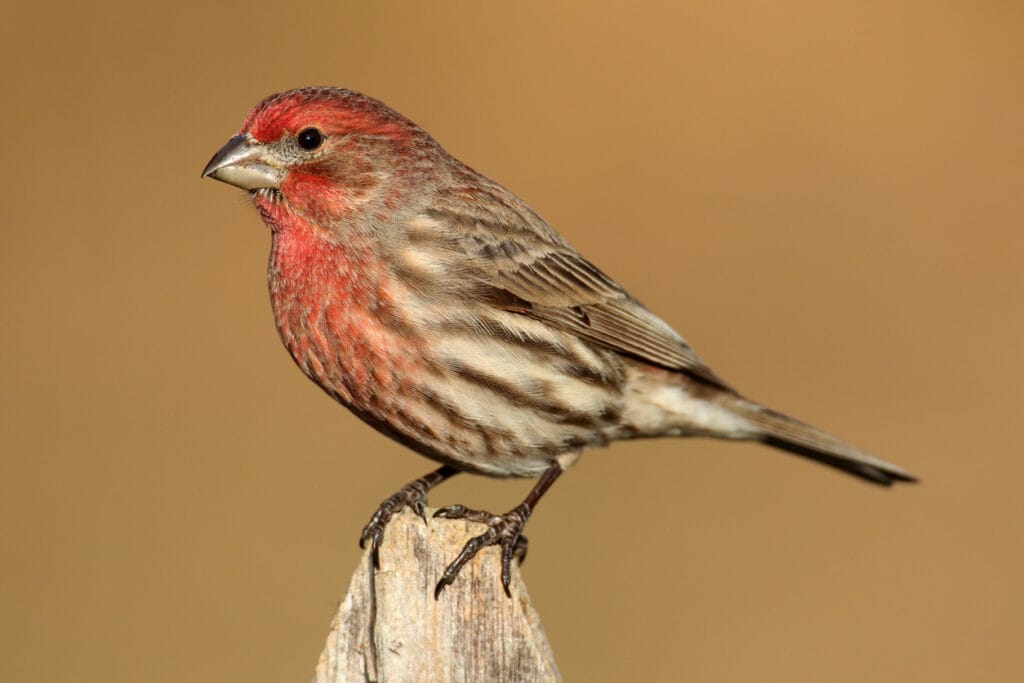
Finches are considered the smallest songbirds of the Passeriformes order. There are a hundred different types of finches around the world.
Note that wild finch species are illegal to be held in captivity. So, if you’re thinking about keeping finches as pets, make sure to choose a domestic type.
The most common finches of the Pacific Northwest are House Finches, Purple Finches, and American Goldfinch. Only Purple Finches can be kept as pets. However, you attract the other types to your backyard.
Author Note: These songbirds mostly feed on seeds, buds, berries, and occasionally small insects in the wild. And they never fail to provide beautiful and cheerful songs.
House Finches
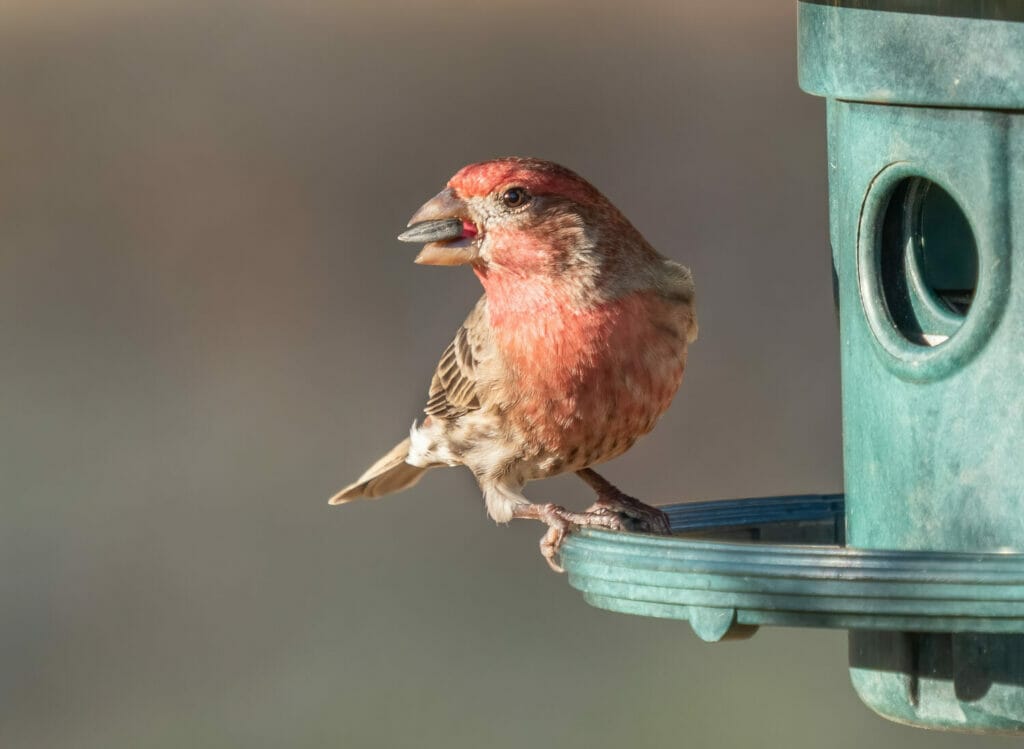
House Finch males are easily identified with their rosy red color around the faces and their upper breasts. The intensity of the red color varies. Some males are more orange, whereas others are more yellow.
Their red color comes from the pigment in their food. So, the more pigment in the food, the redder the finch becomes.
Female House Finches opt to mate with males that are reddish the most. It’s like a guarantee for them to have a mate that is capable of feeding the nestlings.
House Finch females aren’t red like their males. They’re greyish brown overall, with vertical streaks on their bellies.
These types of Finches are found nearly everywhere, from city parks and backyards to deserts and open woods. So, it’s common to hear their beautiful singing.
Purple Finches
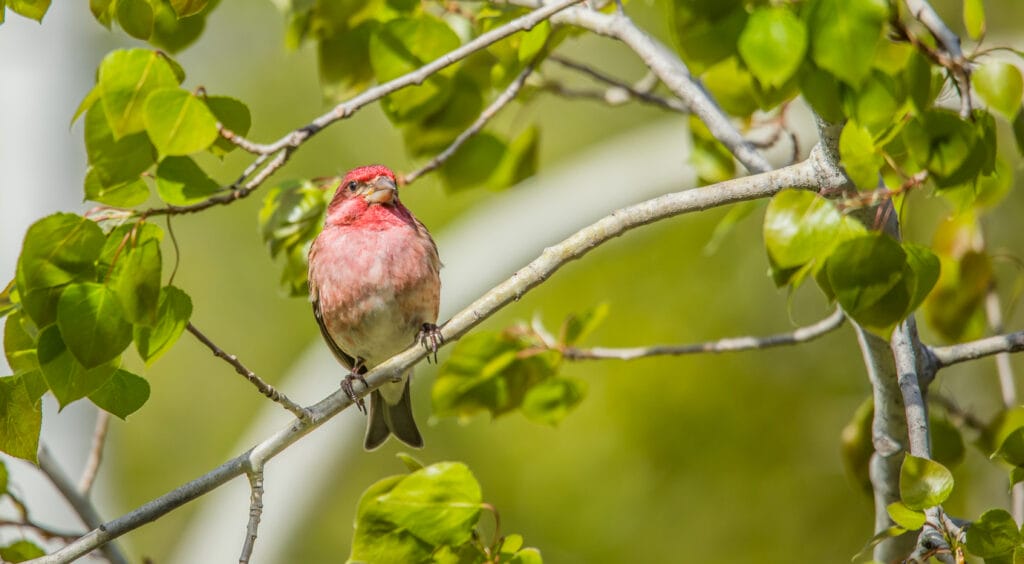
These are among the smallest forest songbirds. Even though their name is Purple Finches, they’re not actually purple. Males are more of a raspberry red color, with brownish backs and white bellies.
Females, on the other hand, have no red. Similar to the House Finch females, their upper parts are brown and have streaks on their bellies. To identify a female Purple Finch, look for pale eyebrows and a dark line on the throat.
These beautiful songbirds prefer feeding on seeds and occasionally insects. But, when kept as pets, we recommend feeding them commercial mixes to provide a well-balanced diet.
Finches are colony birds. It’s best to have them in pairs. Also, choose a cage that is big enough to allow them to fly a little.
Although they like socializing with humans, they don’t prefer to be handled. They make for great pet birds, nonetheless. They’re usually quiet, but when they sing, they’ll definitely be heard.
American Goldfinches
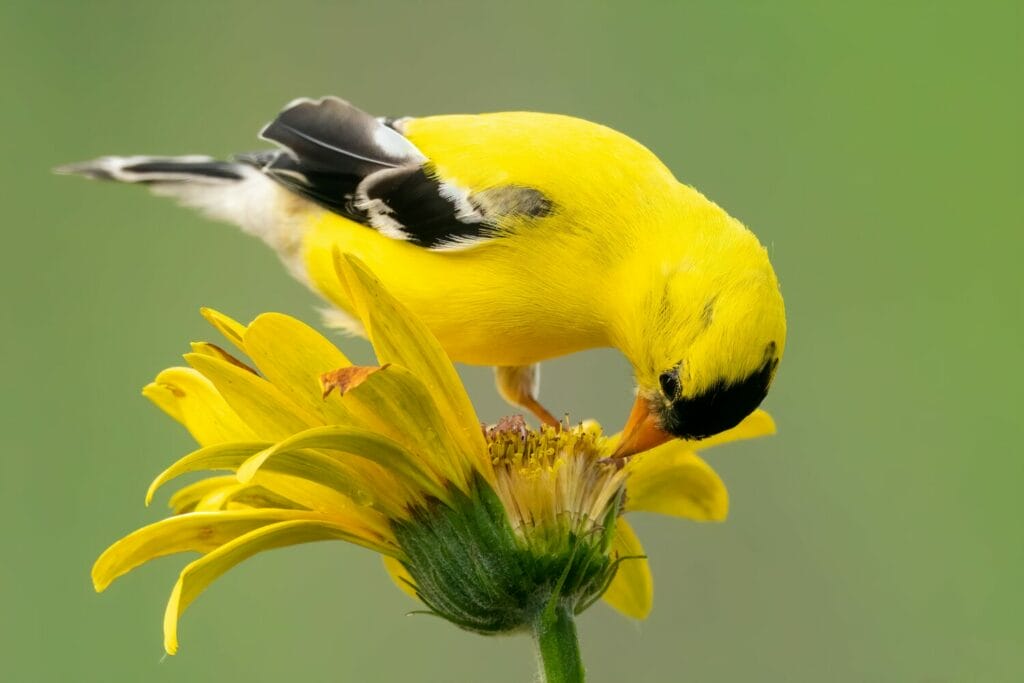
The most colorful of the three, American Goldfinches are bright yellow with black foreheads. Their tails and wings are also black with white markings.
Author Note: Females are less colorful. They‘re duller yellow with olive heads. They have distinctive white and black bars on their wings.
Unfortunately, American Goldfinches are protected by the law and it’s not allowed to keep them as pets. However, they’re frequent backyard visitors and will bless your backyard in the morning with the happiest songs if you know how to attract them.
Common Songbirds of the Pacific Northwest: Sparrows
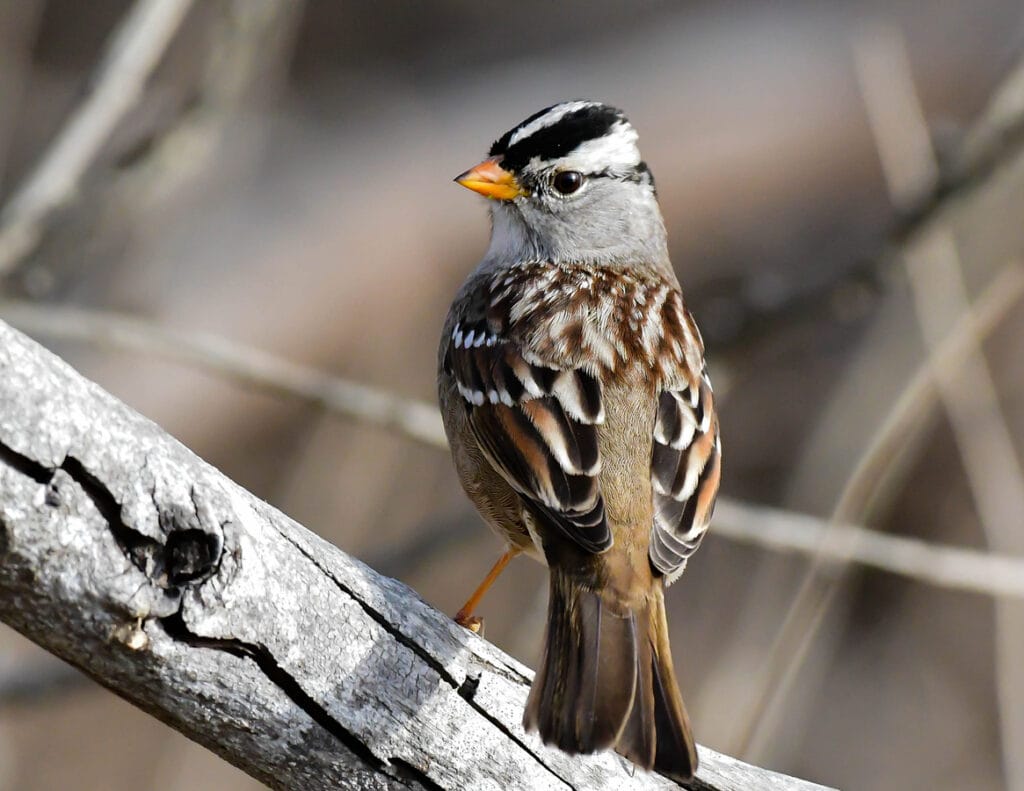
All types of sparrows are singing birds. Each type has its unique songs. Some of them are fall and winter backyard visitors, while others are more common in the spring.
Fall and Winter Sparrows
When cold winter storms hit the Pacific Northwest, birds move to lower elevations searching for food and warmth, including winter sparrows. If you’re lucky, you might be paid a visit by a winter sparrow and hear its sweet melodies.
White-Crowned Sparrows

These are large and long-tailed sparrows. You can easily identify them by their bold black and white striped heads. The ones common along the pacific coast tend to have yellow bills.
Listen for their thin and sweet whistles in your backyard, or look for them in brushy and weedy areas.
Golden-crowned Sparrows

These look pretty similar to White-Crowned sparrows. They have brownish or greyish bodies with a black crown and a yellow forehead.
Author Note: In the winter, you’ll find these sparrows in loose flocks mixed with White-Crowned sparrows. Luckily for you, they’re also frequent backyard visitors, so listen for their flute-like whistles.
Fox Sparrows

These large dark sparrows are widely spread among the country. Their colors vary according to the area. In the Pacific Northwest, they’re colored like soot and are common backyard visitors.
Spring Sparrows
This group of sparrows is found all year round, but more common in the spring. They are friends of backyard feeders. You might get lucky this year and have one of them living in your backyard.
Song Sparrow

Song sparrows are common throughout most of North America. Their plumage changes according to the area that you might think they’re different species, but once you hear their songs, you’ll know for sure you’re listening to Song sparrows.
House Sparrow
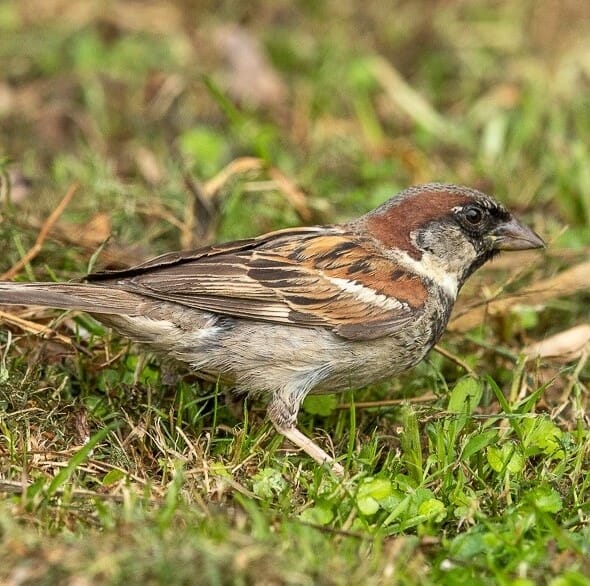
House sparrows aren’t native birds. That’s why they’re unwelcomed in many backyards. However, it’s one of the most common birds in the Pacific Northwest and is found in both cities and farms.
Males are colorful. They have greyish bodies with grey foreheads, white cheeks, and buff and brown patterned wings. Females are less colorful, having plain brown bodies.
Common Songbirds of the Pacific Northwest: Wrens
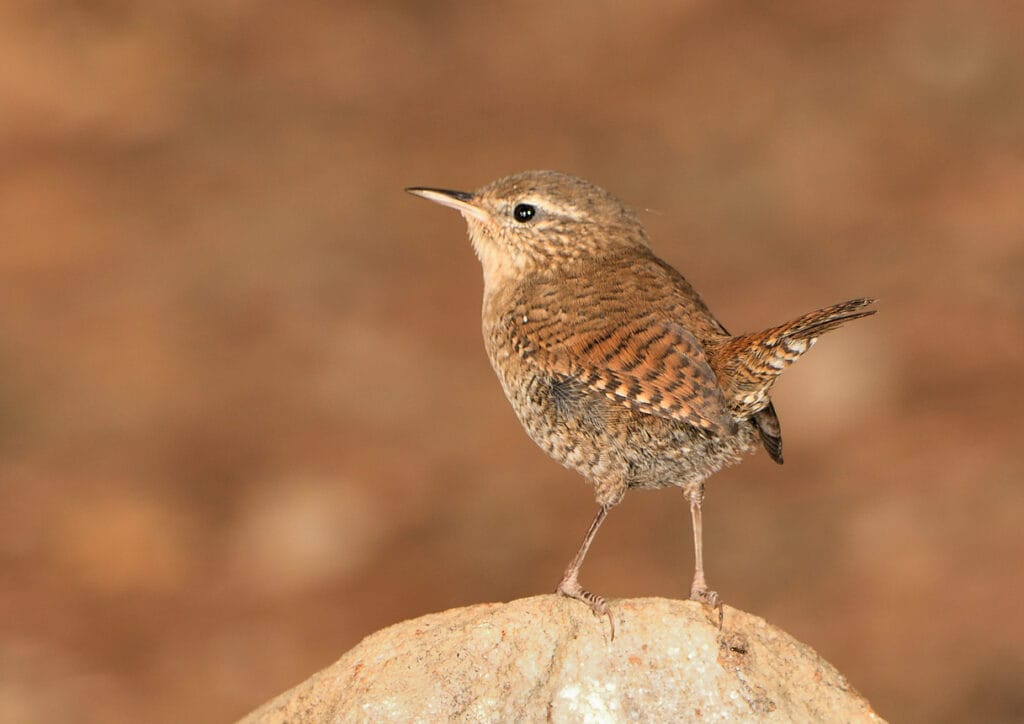
There are about 80 species of wrens worldwide. We’re blessed to have 9 of them in North America. The most common types in the Pacific Northwest are Winter wrens, Bewick’s wrens, and Marsh wrens.
Winter Wrens

They have plain brown bodies with darker barrings on the wings. Despite their tiny sizes, they have distinctive, loud singing.
Winter wrens prefer living in forested areas and evergreens. If you ever get the chance to watch one of them searching for food, you’ll notice that they move more like a mouse than a bird.
Bewick’s Wrens
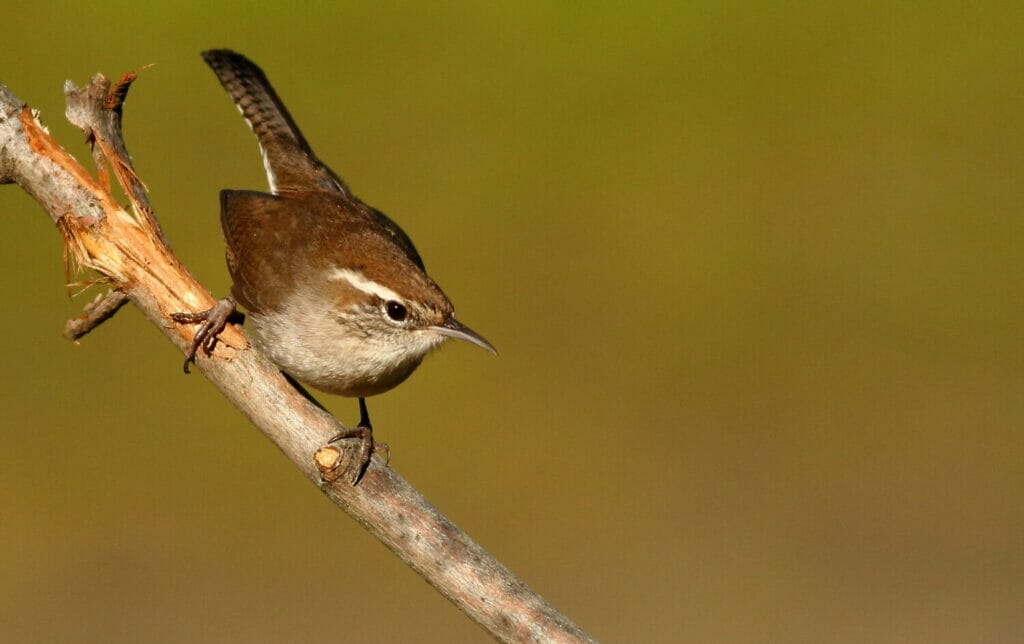
You can identify these songbirds by their grey-and-brown plumage and visible white eyebrows. They’re common along the Columbia River and Walla Walla River.
These master vocalists are one of the first songbird species to start singing when spring comes around in March. They may visit your backyard if the right food is available. You can attract them with suet and peanut hearts.
Marsh Wrens
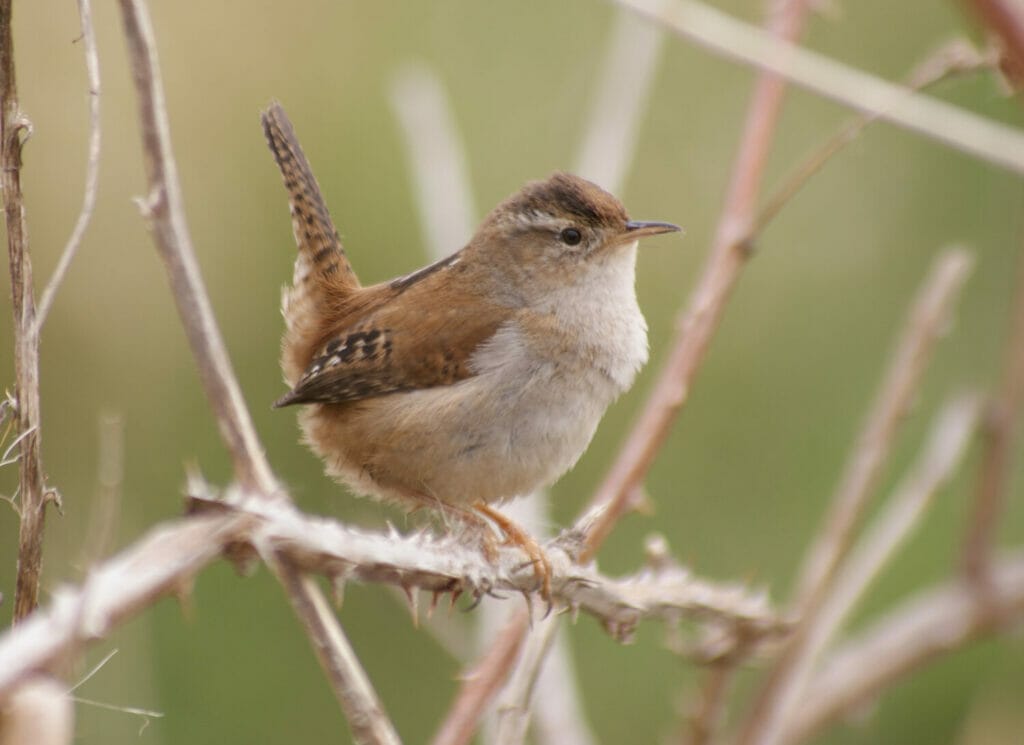
Marsh wrens are common in cattail marshes and emergent vegetation habitats. They’re quite small, with bright rufous plumage and whitish throats.
These songbirds don’t only sing during the day, but also during the night. The next time you’re visiting your local pond with cattail marshes, look for these songsters.
Common Songbirds of the Pacific Northwest: Chickadees

Chickadees are sociable songbirds that are common visitors of backyard feeders. Humans tend to like them because Chickadees are curious birds and are unafraid of humans. Not to mention that they’re amazing singers.
They’re the easiest to attract to your backyard. You can use anything from black oil sunflower seeds to suet and peanuts. They’re attracted to all types of feeders and nesting boxes.
Black-Capped Chickadee

Thanks to their tiny bodies and round heads, Black-Capped chickadees are considered among the cutest songbirds in North America. They’re grey overall, with black caps, black throats, and white cheeks.
Chestnut-Backed Chickadee

Chestnut-Backed chickadees look just like any Pacific Northwest chickadee, but with reddish-brown backs and brown sides. They prefer forests with dense conifers and oaks. They’re also found in shrubs in suburban areas.
Common Songbirds of the Pacific Northwest: Swallows

Swallows are different from any songbirds. They spend most of their time flying. They can live anywhere they can build their nests. Not to mention, their amazing voices.
Barn Swallows
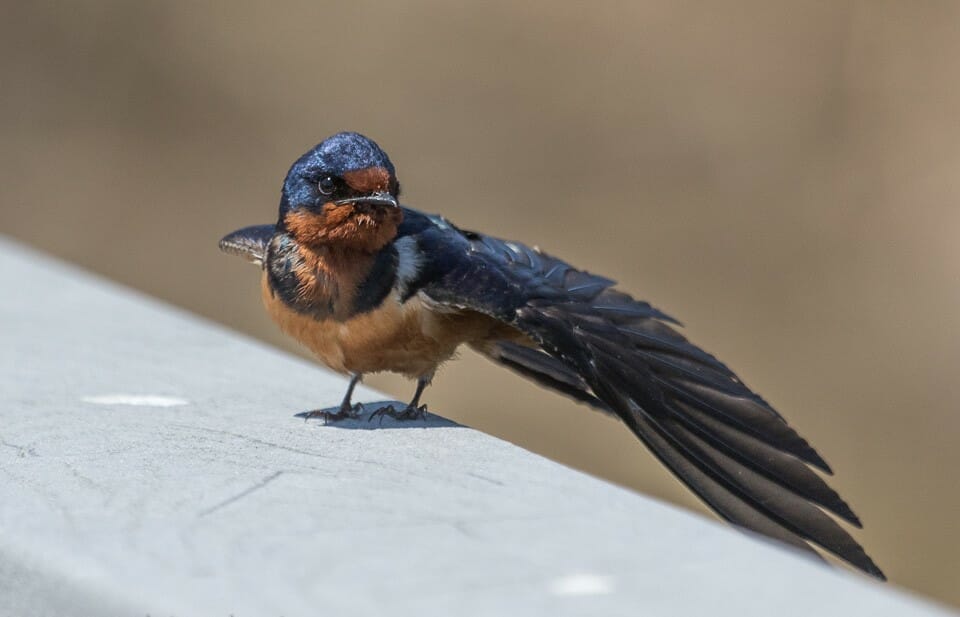
Barn swallows are large with long tails. They’re colorful with a steely blue back and a crown contrasting with their cinnamon-colored throats and foreheads. They’re called Barn swallows because they use man-made structures to build their nests.
Violet-Green Swallows

Violet-Green Swallows have green and violet backs and wings with white bellies. They’re some of the prettiest songbirds in the Pacific Northwest region.
If you want to attract them to your backyards, consider putting up several nest boxes. They like to nest in small groups.
Other Common Birds of the Pacific Northwest
American Crow
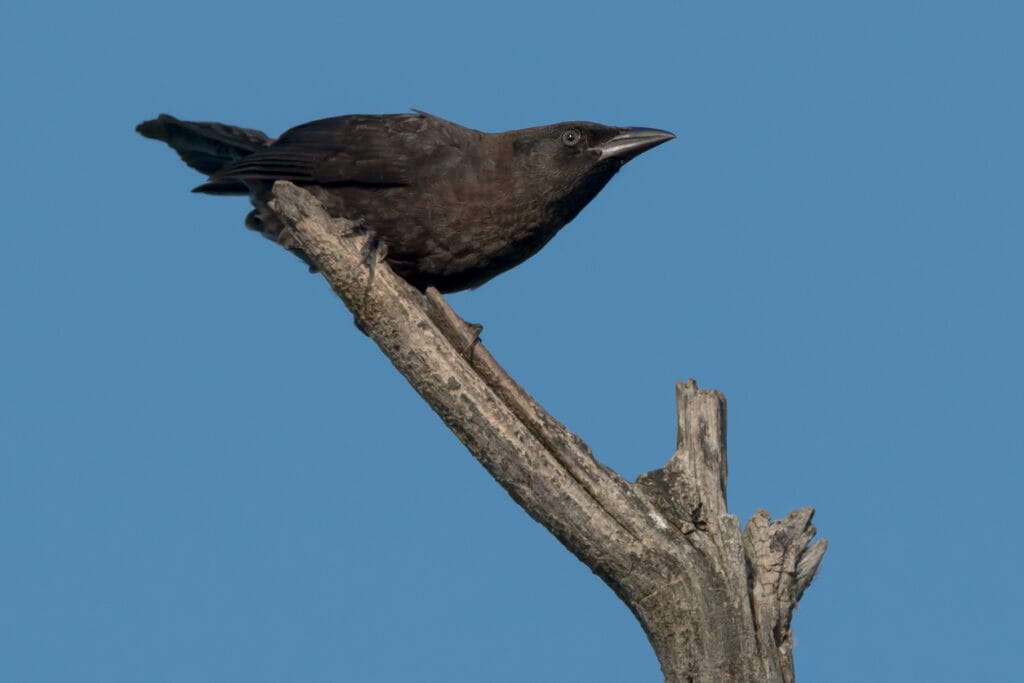
Yes, American crows are songbirds. They have a distinctive “caw caw” call. These black-colored birds will amaze you with their intelligence and fearlessness.
Author Note: They’re not common visitors of backyard feeders. However, you can attract them with some peanuts amid trees. Having them around is always good as they can scare hawks and owls away.
American Robin
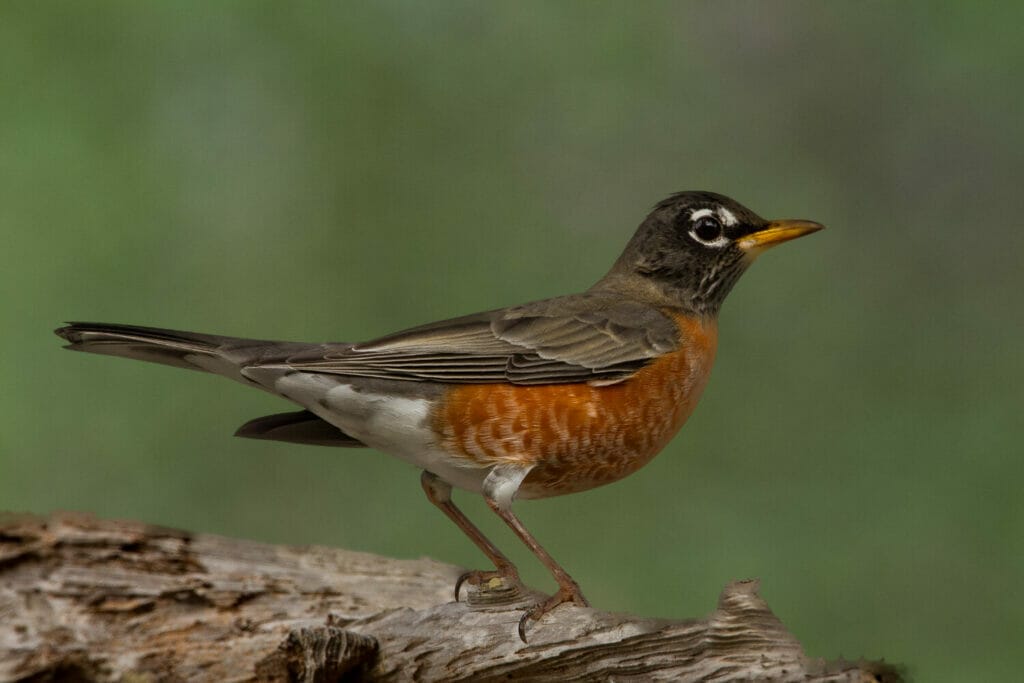
American robins are large colorful songbirds with long legs and tails. They’re ray brown with warm orange bellies and dark heads.
These singers are common everywhere in parks, golf courses, and other areas. So you’ve probably seen and heard them before. They’re frequent backyard feeders visitors, too.
Black-Headed Grosbeaks
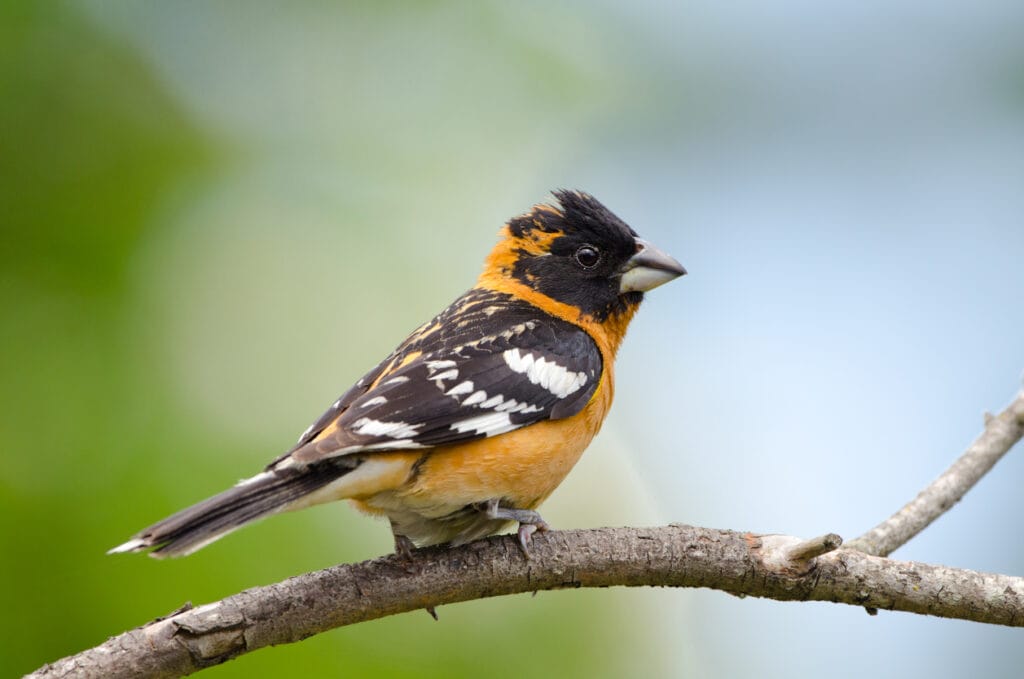
Grosbeaks are among the lesser-known songbirds. Male Black-Headed grosbeaks are orange cinnamon with black heads and black and white barred wings, while females are rather brown.
You can have these birds nesting in your backyard if water and food are available. They’re loud songsters, but amazing ones, for sure.
Spotted Towhees

Spotted Towhee are likely to visit or even live in your backyard feeders. They’re large birds with white-spotted black upperparts and war rufous flanks.
Females are greyish brown with the same pattern as males. Listen for the buzzy songs in the spring.
Final Thoughts
There are other magnificent species of songbirds to look for in the Pacific Northwest region, including European Starlings, Red-Winged Blackbirds, Rufous Hummingbirds, Bushtit, Steller’s Jays, Pine Siskins, and Dark-Eyed Juncos
Remember that not all of the songbirds listed above can be kept as pets. Some of them are protected by law and are illegal to be captured. If you want to have a bird pet, make sure to choose a domestic type.
We recommend starting backyard feeding if you want to be visited by some of these beautiful birds. It’s a good way to wake up to the songs of these birds. we hope you enjoyed this guide to the common songbirds of the Pacific Northwest.
Fly high friends!
FAQ
The Northern Mockingbird is adept at mimicry and can copy a human whistle.
Studies have shown that all songbird species originated in Australia but experts still don’t know how they got to everywhere else!
Believe it or not, it is the humble House Sparrow. While it is so common that we take it for granted and pretty much tune it out, it has a range of cheerful songs and is lovely to listen to.







